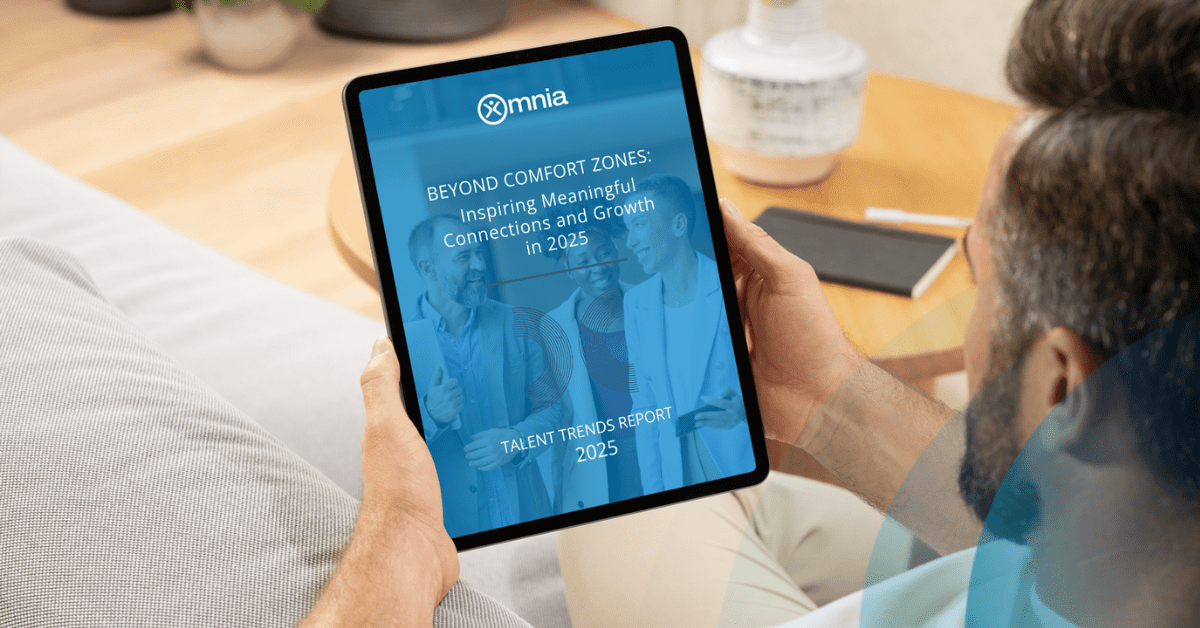Empathy is an important element in growing and nurturing strong connections, in both our personal and professional lives. When someone takes the time to understand another person’s perspectives or emotions, it can cause a deeper relationship to bloom between the two. In a job setting, empathy can foster productive conversations and help resolve conflicts. A workplace that encourages empathy helps employees feel valued and appreciated, which can contribute to stronger engagement, loyalty, and productivity. It begins with understanding what empathy is.
Sympathy vs. Empathy
Sympathy and empathy can both be important factors in helping promote that human connection in your organization, but they are not the same thing. Sympathy involves feeling concern for someone, such as “feeling bad” about another person’s misfortune or pain, but without really knowing what it is like to be in their specific situation. Your emotions about the matter come from your own perspective. Empathy takes it a step further; empathy accentuates the giver’s compassion by trying to understand what a person is going through based on that person’s unique experiences or views.
For example, sympathy means you feel sorry for your colleague Tom whose family member is dealing with a difficult illness. A sympathetic response can look like expressing your support to Tom, sending him a card, or making a donation to a charity that funds research for the illness — all of which are great things to do. Empathy, however, helps you dive deeper into what Tom is feeling and why. You may see how Tom’s close relationship with his family member makes the illness hard on him, that Tom feels stressed over large medical bills and the ability to pay them, and other issues unique to Tom’s situation. Empathy gives you a more well-rounded idea of what another person is going through.
And empathy is not only for problems or difficulties; it also helps drive understanding when teams are discussing ideas, developing plans, and trying to come to an agreement about how to move forward with projects and strategies. When people feel that their ideas and views are given true consideration and that their managers and co-workers are interested in understanding the reasons behind those views, then collaboration and compromise often come much easier.
Ideas for growing an empathetic workplace
1. Start from the top down.
Empathetic leadership can have a trickle-down effect that impacts everyone in the organization. When employees know that management genuinely prioritizes understanding and relating to personnel, it inspires them to do the same for their colleagues. In addition to discussing the importance of an empathetic workplace to your staff, show empathy in tangible ways by asking questions, considering different points of view, and offering to help with problems or conflicts.
Institute an open-door policy for your team, and make sure they know you are available and willing to discuss any issues they may be dealing with, without judgment. Emphasize this idea by having regular meetings, in person or virtual, with your staff, and encourage open, respectful dialogue.
Knowing the communication styles of your employees is helpful when conducting these meetings. You can use a personality or behavioral assessment to show you who on your staff is expressive, outgoing, and prefers to talk through their ideas or problems and who are more reserved and need time to flesh out their thoughts internally before conveying them to others. Some people, especially in the reserved group, may prefer putting their ideas in writing more than verbalizing them in front of the group. Recognizing these differences and allowing employees to voice their perspectives or ideas in their own style can help facilitate richer discussions and stronger understanding within the team.
Employees might not be comfortable bringing certain topics up to management or in a public meeting, which is why having an empathetic peer group on the job is crucial. Leadership should encourage colleagues to set aside time to talk and share with each other in a low-stress way.
2. Listen, listen, and listen some more.
Empathy involves a genuine desire to understand someone else, and you cannot accomplish that if you do most of the talking yourself. Whether you are a manager interacting with your staff or working peer to peer, listen attentively to what the person is saying rather than thinking of how you should respond.
Pay attention to their non-verbal cues, like tone, facial expressions, and gestures, which can be easily missed if you are not focused on the other person. Additionally, make sure your own body language conveys that you are fully present and not distracted. Only after taking in all of what the other person has said should you consider how to respond.
3. When it’s time to speak, consider your response carefully.
Start out by repeating what the other person has said but in your own words to be sure you are not misunderstanding anything. Try starting with the phrase, “What I’m hearing you say is…” and rephrase the main points of the conversation. This gives the other person a chance to correct or clarify what they are trying to convey.
It can be tempting to say, “I know exactly how you feel. I had the same experience when…” but resist this impulse. You may intend to use this to build a connection, showing how you understand what the person is going through, but doing so can make it feel like you are making the conversation about yourself. When trying to show an empathetic response, recognize that the person’s experience is unique to them; you are trying to understand them and their perspectives, not merely trying to draw parallels to your own life.
Remember, empathy isn’t about fixing someone’s problems; it’s about building a connection through understanding. It’s fine to offer your thoughts or ideas if the person asks for them, but sometimes being there to listen without judgment can provide exactly what the person needs while growing a sense of trust and appreciation.
Omnia has helped organizations recognize and understand their employees’ unique attributes, strengths, and motivators for nearly 40 years. Our dedicated Client Success Managers act as trusted advisors for our clients, helping them learn how to take this valuable knowledge and use it to enhance their workforce. Let us partner with you to put the power of insight to work in your business.























